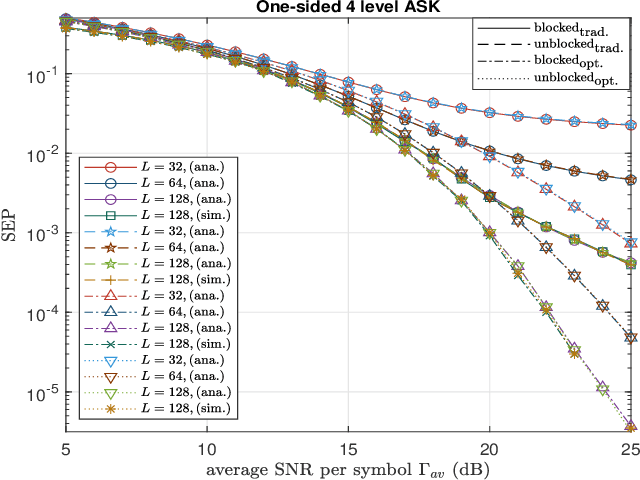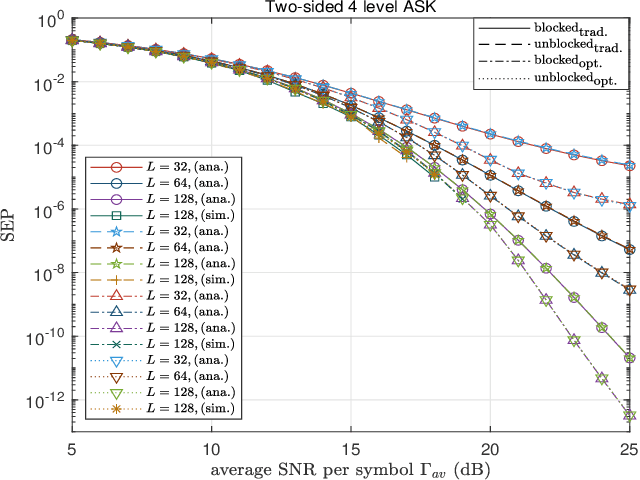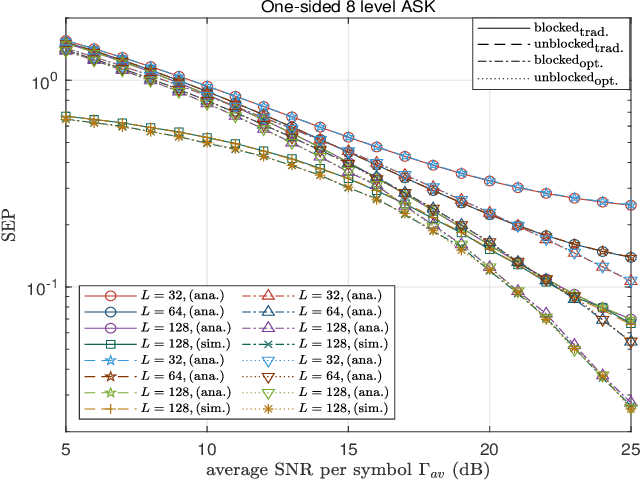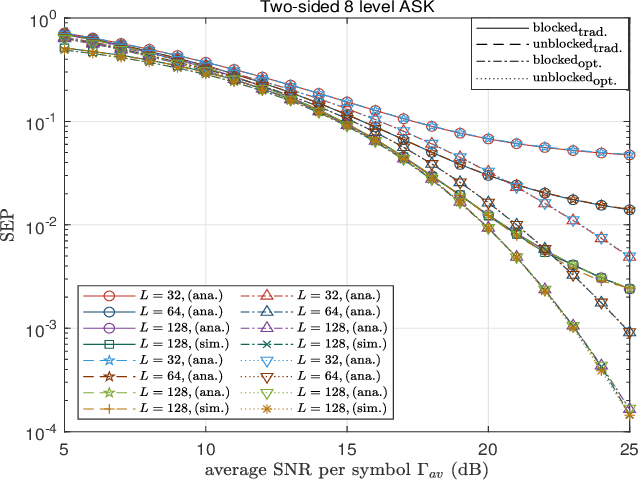Badri Ramanjaneya Reddy
Optimal One- and Two-Sided Multi-Level ASK for Noncoherent SIMO Systems Over Correlated Rician Fading
Mar 26, 2025Abstract:This paper analyzes the performance of a single-input multiple-output (SIMO) wireless communication system employing one- and two-sided amplitude shift keying (ASK) modulation schemes for data transmission and operating under correlated Rician fading channels. The receiver deploys an optimal noncoherent maximum likelihood detector, which exploits statistical knowledge of the channel state information for signal decoding. An optimal receiver structure is derived, from which series-form and closed-form expressions for the union bound on the symbol error probability (SEP) are obtained for general and massive SIMO systems, respectively. Furthermore, an optimization framework to derive the optimal one- and two-sided ASK modulation schemes is proposed, which focuses on minimizing SEP performance under an average transmit energy constraint. The conducted numerical investigations for various system parameters demonstrate that the proposed noncoherent SIMO system with the designed optimal ASK modulation schemes achieves superior error performance compared to traditional equispaced ASK modulation. It is also shown that, when the proposed system employs traditional two-sided ASK modulation, superior error performance from the case of using one-sided ASK is obtained.
Optimal One- and Two-Sided Multi-level ASK Modulation or RIS-Assisted Noncoherent Communication Systems
Oct 02, 2024



Abstract:In this paper, we analyze the performance of one- and two-sided amplitude shift keying (ASK) modulations in single-input single-output wireless communication aided by a reconfigurable intelligent surface (RIS). Two scenarios are considered for the channel conditions: a blocked direct channel between the transmitter and the receiver, and an unblocked one. For the receiver, a noncoherent maximum likelihood detector is proposed, which detects the transmitted data signal based on statistical knowledge of the channel. The system's performance is then evaluated by deriving the symbol error probability (SEP) for both scenarios using the proposed noncoherent receiver structures. We also present a novel optimization framework to obtain the optimal one- and two-sided ASK modulation schemes that minimize the SEP under constraints on the available average transmit power for both the blocked and unblocked direct channel scenarios. Our extensive numerical investigations showcase that the considered RIS-aided communication system achieves superior error performance with both derived SEP-optimal ASK modulation schemes as compared to respective traditional ASK modulation. It is also demonstrated that, between the two proposed modulation schemes, the two-sided one yields the best SEP. The error performance is further analyzed for different system parameters, providing a comprehensive performance investigation of RIS-assisted noncoherent wireless communication systems.
 Add to Chrome
Add to Chrome Add to Firefox
Add to Firefox Add to Edge
Add to Edge